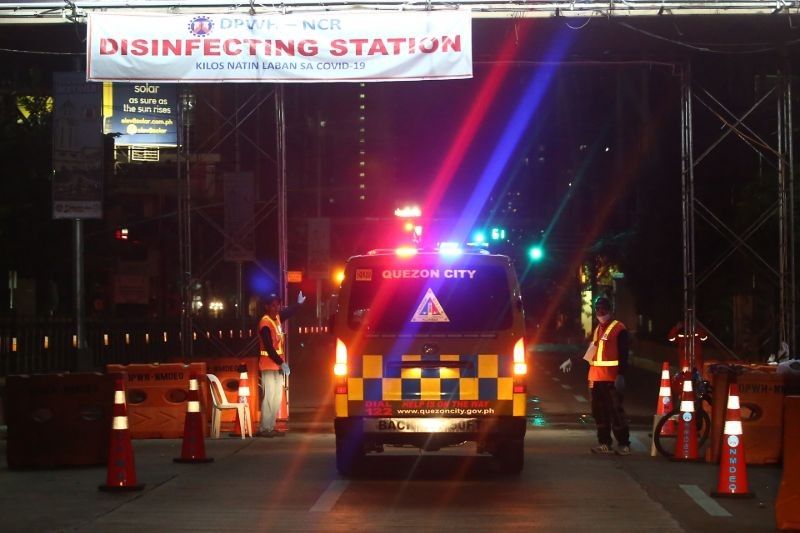National Task Force: COVID-19 quarantine may need to be extended as cases rise

MANILA, Philippines — Weeks into the enhanced community quarantine hoisted over all of mainland Luzon, and there are still no significant signs that the novel coronavirus (COVID-19) curve is flattening, presidential peace advoser Carlito Galvez, Jr., chief implementor of the Philippine's COVID-19 response, said Sunday.
According to Galvez, this is one major reason that the national government is still leaving the door open for a potential extension of the Luzon-wide lockdown.
Over the past week, confirmed COVID-19 cases have been rising daily, though the Department of Health assured the public that this was due to enhanced testing capabilities.
On Saturday, the nationwide total shot up to 3,094 with a death toll of 144.
“Yes, there is a possibility it may be extended because the threshold has not yet been achieved,” Galvez said an interview with CNN Philippines.
“There’s still the rise of new cases, and also the cases of the deaths,” he added.
"We do not see a significant 'flattening of the curve'," he also said in Filipino.
Flattening the curve?
The World Health Organization has long been calling on governments to "flatten the curve" — slow the rise in cases to avoid overwhelming healthcare systems, by implementing strict social distancing measures with the aim of slowing down transmission and buying time for the development of vaccines and treatments.
According to the US Centers for Disease Control and Prevention, social distancing means "remaining out of congregate settings, avoiding mass gatherings, and maintaining distance (approximately 6 feet or 2 meters) from others when possible."
Earlier this week, Coalition for People's Right to Health (CPRH) in a statement said that solving the COVID-19 pandemic would not be solved by "putting the responsibility on individuals alone."
"In order to truly combat the disease, we must also address its social determinants and health aspects [which] involves addressing the needs of individuals to effectively live in quarantine, such as access to food, compensation, and health care," CPRH said.
"This ensures that 'social distancing' becomes more of physical distancing, and not devoid of social solidarity."
'Cases still rising despite gov't efforts'
Mainland Luzon is entering its fourth week under enhanced community quarantine since it was first declared by President Duterte on March 17, severely restricting movement and leaving the vulnerable grappling with uncertainty.
Days after this declaration, the chief executive also announced a nationwide state of calamity, whose proclamation said that the designation was necessary because the number of cases was still rising despite government intervention. But the number of cases had been expected to increase as more people are tested for COVID-19.
Galvez bared that the task force was also gathering assessments from local government units (LGUs), highlighting that the next two weeks of enhanced community quarantine would be important in the task force's decision making.
Furthermore, he said that the designation of the Rizal Memorial Coliseum in Manila into a quarantine facility would see completion this week to add to four existing subtesting areas for COVID-19.
READ: Task force sees start of mass COVID-19 testing by April 14
According to Cabinet Secretary Karlo Nograles, who also serves as the spokesperson for the inter-agency task force on COVID-19 measures, in an online media briefing on Saturday, the following parameters had been adopted by the task force in deciding on the potential lifting or extending of the quarantine:
- Trends in the virus’ epidemiological curve including doubling time, acceleration or deceleration of new cases
- Capacity of the health system, including the number and availability of quarantine, isolation and treatment facilities, the capability to mount contact tracing, the availability of PPEs for frontliners, and the testing capacity of the country
- Social factors
- Economic factors
- Security factors
The Inter-agency Task Force on Emerging Infectious Diseases is set to present its final recommendation to the chief executive before April 14, at which point mass testing of all persons under investigation is slated to begin to complement the enhanced community quarantine.
“We want to be careful because we don’t want to rush into making a decision,” Galvez said.
"We will consider all factors that will affect our decision."
The number of cases globally stands at 1,201,767 with 64,710 deaths according to Worldometers.
If you believe you have come into possible contact with infected patients, you may be directed to the proper office of the Department of Health for advice through the following lines: (632) 8651-7800 local 1149/1150 or (632) 165-364.
You may also opt to call the Research Institute for Tropical Medicine at (02) 8807-2631/ 8807-2632/ 8807-2637.
- Latest
- Trending

































